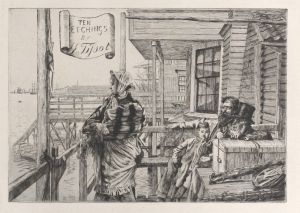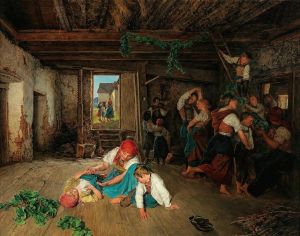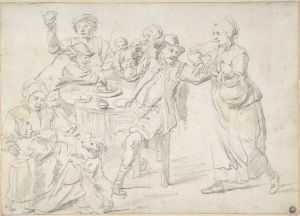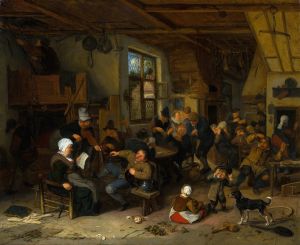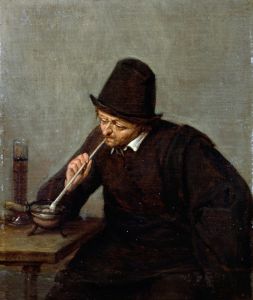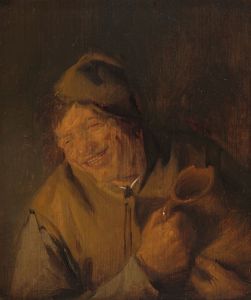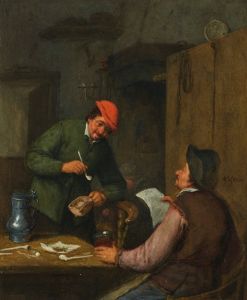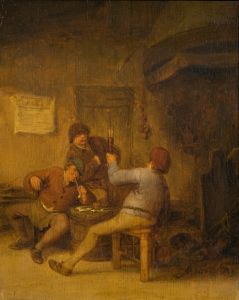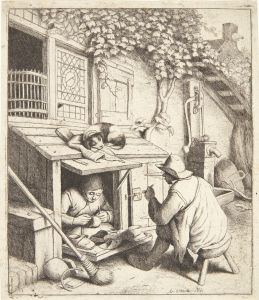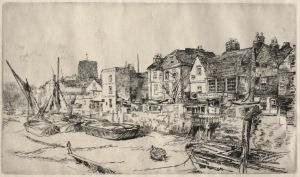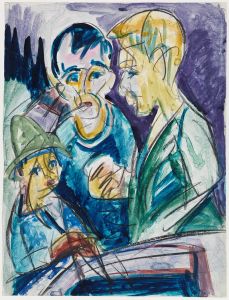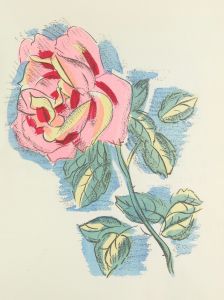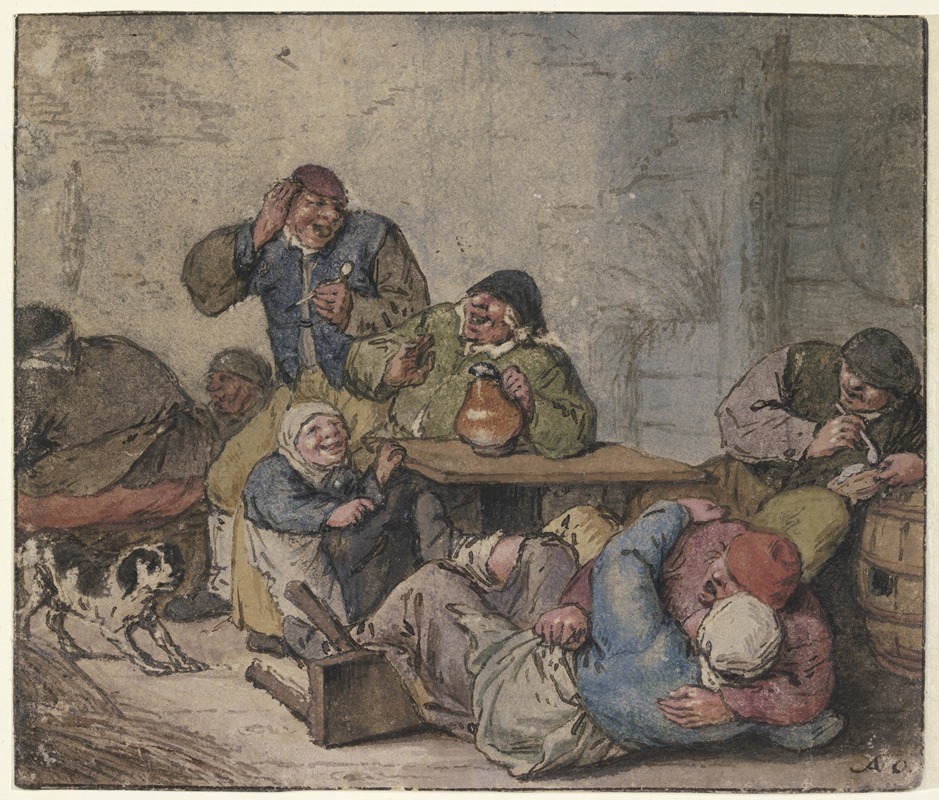
Ausgelassene Bauern im Wirtshaus
A hand-painted replica of Adriaen van Ostade’s masterpiece Ausgelassene Bauern im Wirtshaus, meticulously crafted by professional artists to capture the true essence of the original. Each piece is created with museum-quality canvas and rare mineral pigments, carefully painted by experienced artists with delicate brushstrokes and rich, layered colors to perfectly recreate the texture of the original artwork. Unlike machine-printed reproductions, this hand-painted version brings the painting to life, infused with the artist’s emotions and skill in every stroke. Whether for personal collection or home decoration, it instantly elevates the artistic atmosphere of any space.
Adriaen van Ostade was a prominent Dutch Golden Age painter known for his genre scenes depicting peasant life. One of his notable works is "Ausgelassene Bauern im Wirtshaus," which translates to "Merry Peasants in the Tavern." This painting exemplifies van Ostade's skill in capturing the lively and often boisterous atmosphere of rural social gatherings during the 17th century.
Van Ostade was born in 1610 in Haarlem, where he spent most of his life and career. He was a pupil of Frans Hals, a master portraitist, which influenced van Ostade's ability to render expressive figures. However, unlike Hals, van Ostade focused primarily on the everyday lives of the lower classes, a subject that was gaining popularity during the Dutch Golden Age due to the burgeoning middle class's interest in art that reflected their own experiences and values.
"Ausgelassene Bauern im Wirtshaus" is a quintessential example of van Ostade's work, showcasing his talent for creating dynamic compositions filled with animated figures. The painting typically features a group of peasants engaged in various activities within the cozy, dimly lit interior of a tavern. These figures are often depicted drinking, smoking, playing music, or engaging in animated conversation, capturing the essence of merriment and camaraderie.
Van Ostade's use of color and light plays a significant role in the painting. He often employed a warm palette, with earthy tones that enhance the rustic setting. The interplay of light and shadow adds depth to the scene, drawing the viewer's eye to the central figures and their interactions. This technique not only highlights the main subjects but also creates a sense of intimacy and immediacy, inviting the viewer to partake in the jovial atmosphere.
The artist's attention to detail is evident in the depiction of the tavern's interior, which is richly adorned with period-appropriate furnishings and objects. These elements serve to ground the scene in reality, providing a glimpse into the material culture of 17th-century Dutch peasantry. Van Ostade's meticulous rendering of textures, from the rough wooden surfaces to the soft folds of clothing, further enhances the painting's realism.
Van Ostade's work is often noted for its humor and humanity. While his scenes of peasant life can be seen as a form of social commentary, they are also imbued with a sense of empathy and respect for his subjects. Rather than caricaturing or mocking the peasants, van Ostade presents them as complex individuals, capable of joy and camaraderie despite their modest circumstances.
Throughout his career, van Ostade produced numerous paintings and etchings that explored similar themes, solidifying his reputation as a master of genre painting. His works were highly sought after during his lifetime and continue to be appreciated for their technical skill and insightful portrayal of 17th-century Dutch life.
In summary, "Ausgelassene Bauern im Wirtshaus" by Adriaen van Ostade is a vibrant depiction of peasant life that showcases the artist's mastery of genre painting. Through his use of color, light, and detail, van Ostade captures the lively spirit of a tavern gathering, offering viewers a window into the social dynamics and cultural milieu of the Dutch Golden Age.





